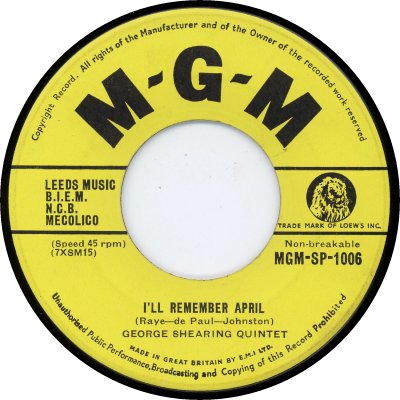
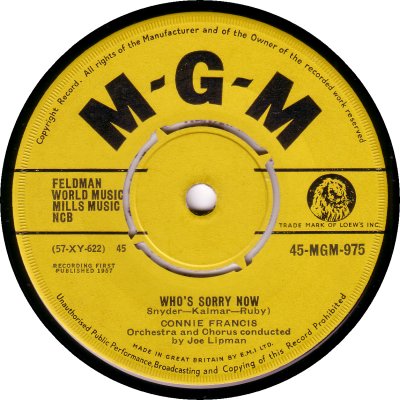
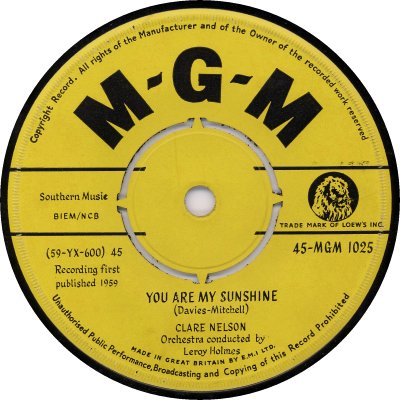
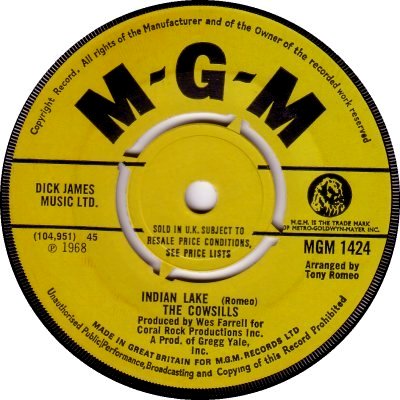
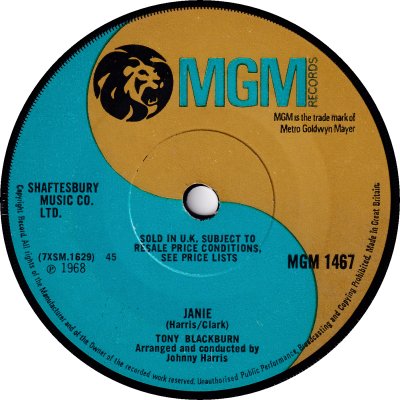
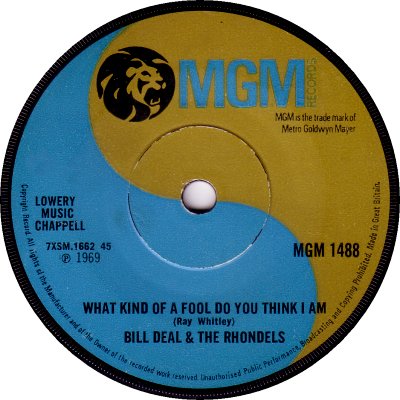
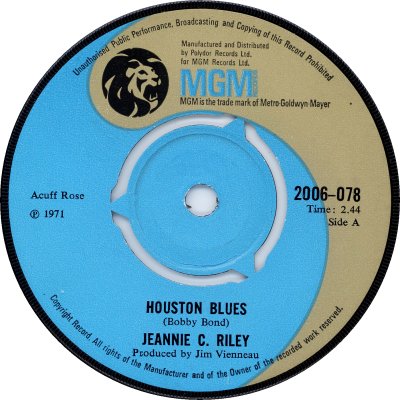
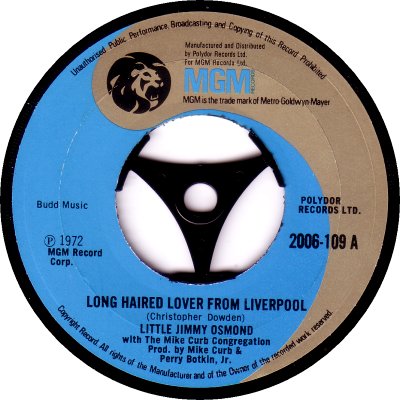
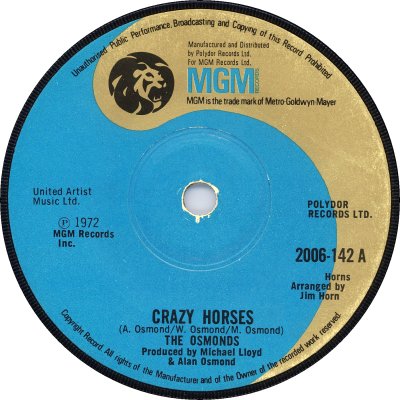
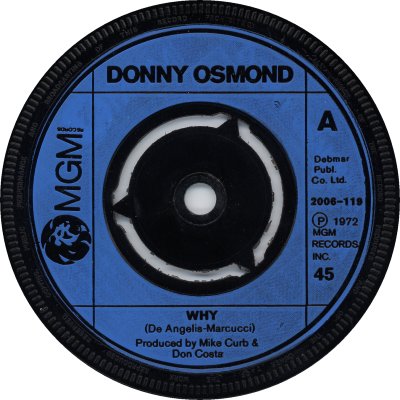
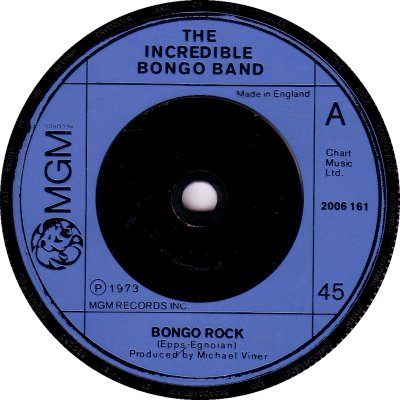
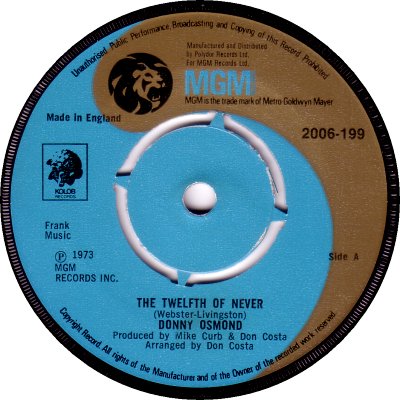
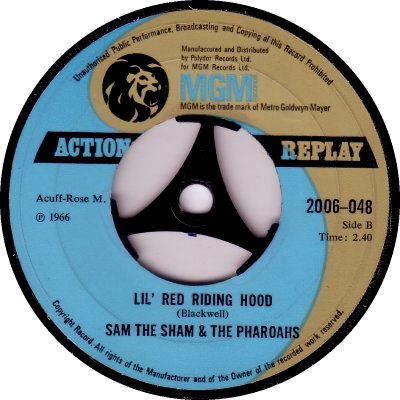
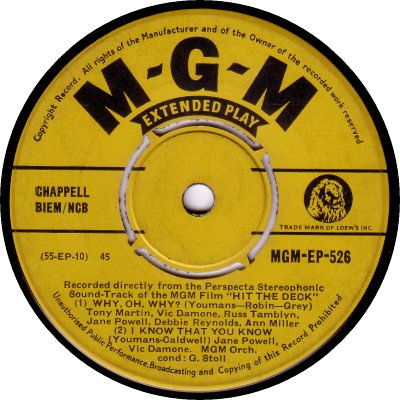
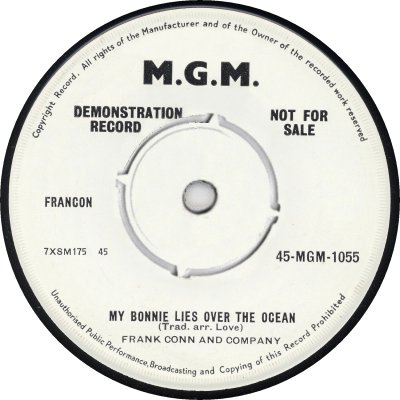
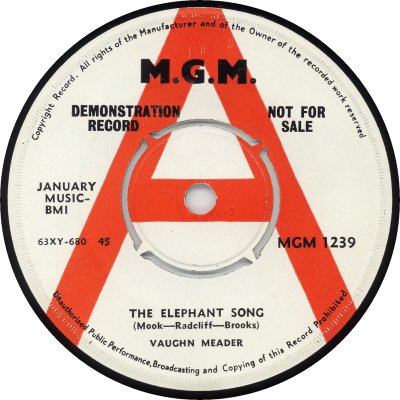
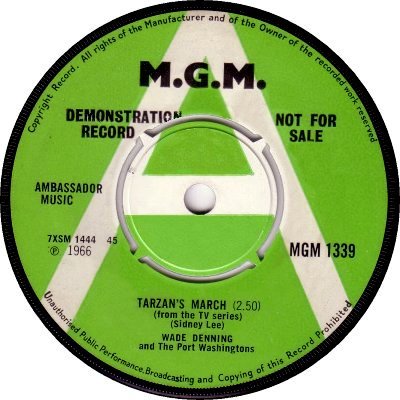
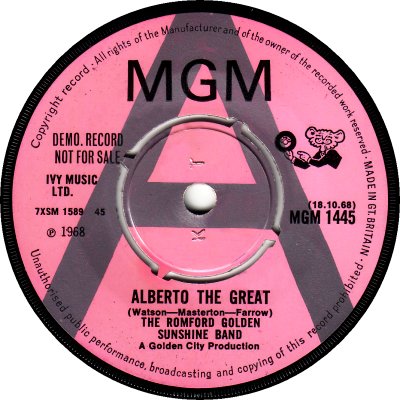
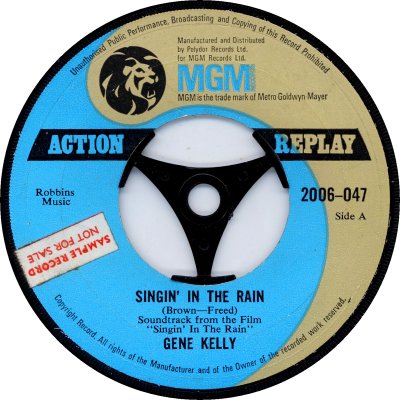
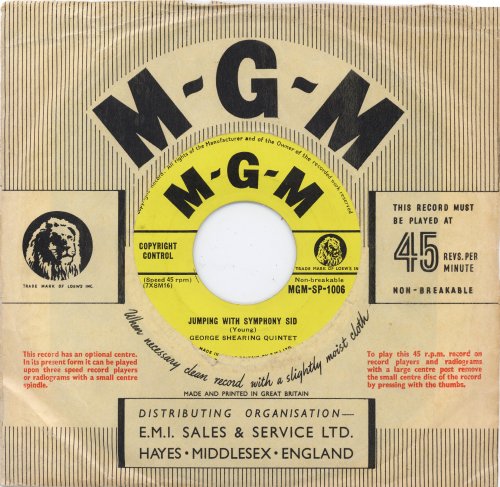
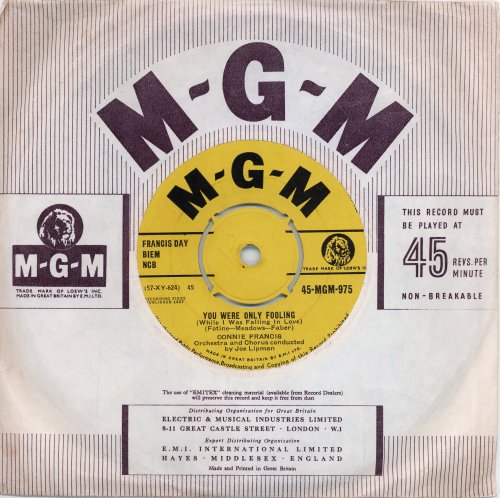
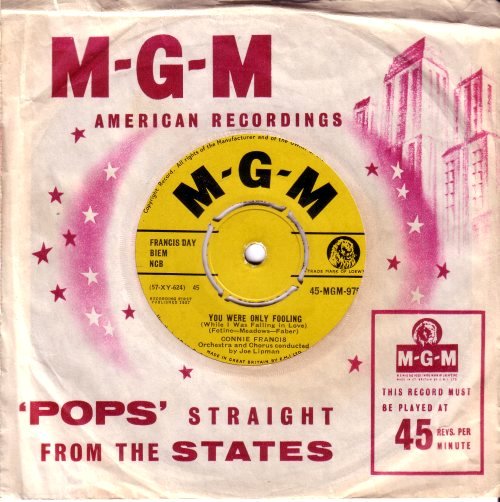
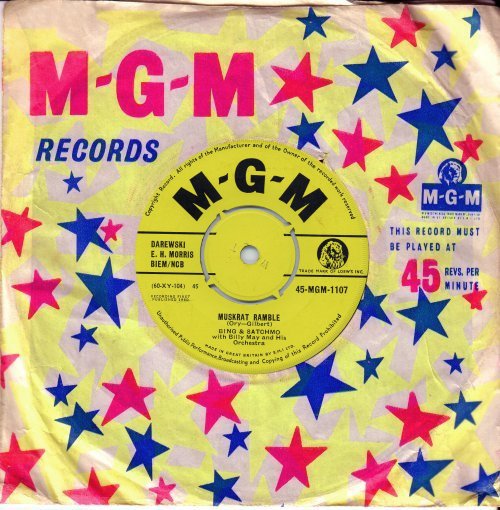
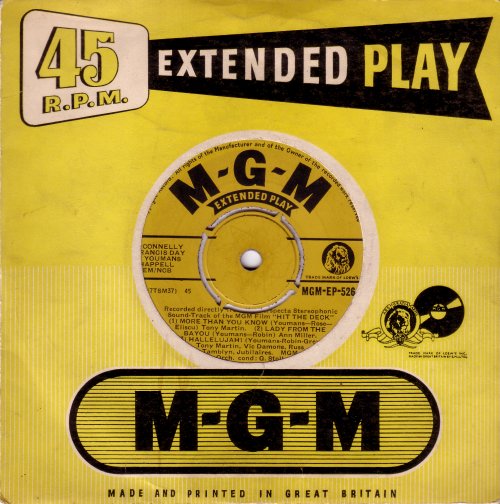
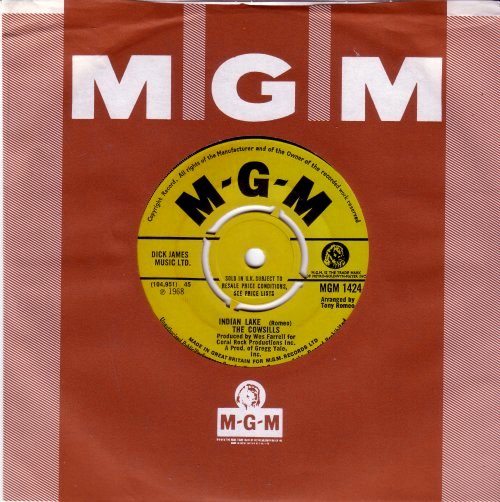
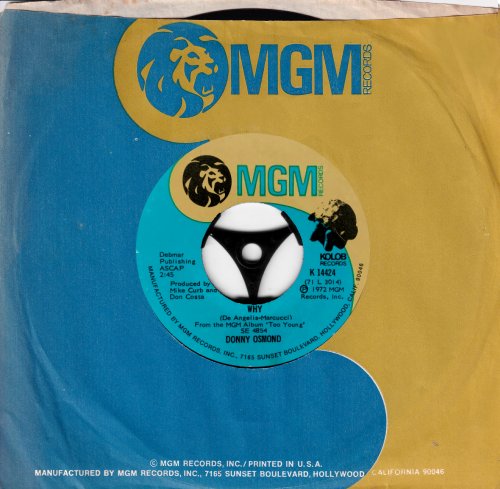
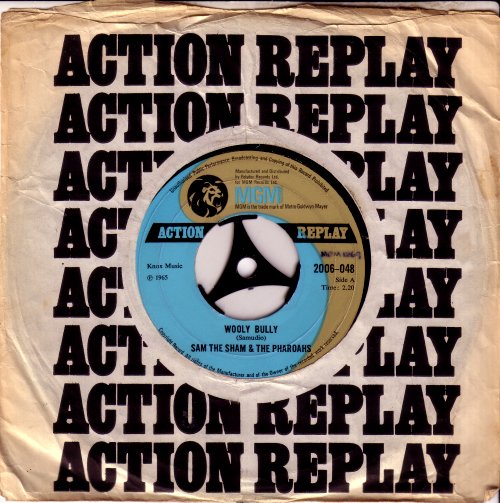
American. The MGM label came into being in 1946. At first it was used for issuing soundtracks from Metro-Goldwyn-Meyer movies, but over the years its scope broadened (as witness the purchase in 1961 of Norman Grantz's 'Verve' Jazz label); eventually Country music became its main concern. The '50s brought success in that field, with Hank Williams, and in the area of Rock 'n' Roll, with Connie Francis and Conway Twitty. Following heavy financial losses in the late '60s the company changed musical direction; the emphasis in the '70s was on 'Family Entertainment' and Pop. MGM was subsumed into PolyGram in 1972; it was discontinued in 1982 after a merger between MGM Inc. and the United Artists corporation.
As far as the UK is concerned, in the late '50s and for several years of the '60s MGM had a licensing agreement with EMI and existed as a label among the others of the EMI family. However, it had ambitions to develop in this country. 'Record Retailer' of the 6th of April 1967 broke the news that the company was setting up its own UK arm, which was intended to be the headquarters of a European operation. The new UK branch was intended to go into action of the 1st of July; it was to handle the MGM, Verve and Folkways labels to begin with, and there were plans for it to handle Kama Sutra when that company's current deal with Pye expired. According to the report, pressing and distribution arrangements were under discussion. The UK operation duly got under way, taking over the promotion and selling of the company's records and beginning to record UK acts. The tasks of pressing and distribution were given to EMI, but the arrangement with Kama Sutra doesn't appear to have materialized.
The agreement with EMI seems not to have run altogether smoothly, for a year later 'RR' of the 27th of July 1968 announced that MGM had signed a distribution deal with Pye, and that administration details and the changeover of stock were expected to be completed by the 1st of August. The Pye deal appears to have hit a major snag, for a couple of weeks later 'RR' of the 7th of August revealed that MGM had gone back to EMI and the Pye was suing. A spokesman for MGM said "We are pleased that our differences [with EMI] have been resolved ... All negotiations with Pye have been terminated." A Pye spokesman gave the opposite view, saying that manufacture, distribution and sale of some MGM products commenced immediately after a firm agreement with MGM had been made, on July the 18th, and that Pye intended to continue under the terms of the deal. 'RR' of the 14th of August added that the first two singles on the MGM-associated label Music Factory were currently on Pye vans, though the master for a third was with EMI. The matter went before the courts, with 'RR' of the 21st of August reporting that EMI was to continue handling MGM until a legal decision was reached; the verdict was expected in October.
Despite 'RR's optimism, the legal battle between MGM and Pye dragged on into 1969; 'RR' of the 4th of July said that it was still going on. The court eventually decided in favour of Pye and awarded appropriate costs (as stated retrospectively in 'RR', 21st February 1970), but MGM was left free to negotiate a new deal with EMI. 'RR' of the 23rd of July 1969 was able to state that MGM was to revert to a licensing deal with that company; the deal was an open-ended one but was intended to be for at least three years, with the option of a switch to a distribution deal if required. According to the report MGM was to retain its UK office and staff, but with EMI handling all the major operations their position must have been untenable. A month later 'RR' of the 23rd of August had to report that no decision had been taken about the 'drastically reduced' UK operation; all independent production deals had been cancelled, and only a single by Tangerine Peel (MGM-1487) was currently in the pipeline. In a final fling MGM's Ron Class was quoted in 'RR' of the 20th of September 1969 as saying that he hoped to give the UK branch a greater degree of autonomy in six months or so and to gradually take on staff, but the hope seems to have been ill-founded and instead of expanding the branch closed down.
The 'open ended' agreement with EMI lasted for roughly eighteen months. 'RR' of the 25th of April 1970 claimed that MGM was seeking to take up the option of a change to a distribution deal, but if the change took place it must have been for a short time. 'RR' of the 21st of November reported that an announcement of MGM moving to Polydor was expected that week, to take effect from the following February, and the next week's issue (28th of November) added that Polydor was to distribute EMI-manufactured MGM product in the New Year. 'RR' of the 16th of January 1971 confirmed that Polydor was indeed handling suitably stickered EMI pressings at that time; Phonodisc took over both manufacture of new product and distribution. Despite the move, the end of MGM Records' existence as an independent company was not far away. 'RR' of the 26th of February 1972 reported that a bid for the company had been made by the PolyGram corporation, which at the time consisted of Polydor Records, Mercury Records and Chappell Music; and the 'gossip' column of 'RR's successor, 'Music Week', of the 20th of May indicated that the purchase had been completed. Under its new owners the label subsequently saw a great deal of Chart success, primarily with the Osmonds, individually and collectively. Despite those successes its days as a contemporary label were numbered; 'MW' of the 17th of April 1976 revealed that new material from MGM acts would be issued on Polydor, with MGM being retained as an outlet for vintage product. There were few singles released on the label from that point onwards.
Three basic label designs were used in Britain, during the 7" era. The first, yellow, one lasted up to 1968, with some minor variations. At the beginning of the vinyl singles era - that is, from January 1953 - MGM singles had large central holes (1), as did those of the other EMI labels, but after around a couple of dozen issues the large holes were replaced by push-out centres (2). A trio of singles in 1959 had the titles and artists' names in a rather calligraphic font (3), while the change from licensed label to independent in June 1967 was marked by a change of the wording at the bottom of the label from 'Made in Great Britain by E.M.I.' to 'Made in Great Britain for M.G.M. Records Ltd' (4). A swirly label in 'blue and honey' with a new stylized 'lion's head' logo was used from 1969 into the early '70s, covering the transition from EMI (5, 6) to Polydor, the honey coloured swirl being smaller in the Polydor years (7, 8, 9); the 'Sold in the UK' text under the spindle hole (4, 5) appeared from February 1964 until July 1969. As was the case with all the labels in the Polydor and Phonogram family, MGM singles were often 'die cut' at the factory so that they came ready for use in juke boxes; they were supplied with plastic 'spiders', for use in ordinary record players (8). At other times in the early '70s singles came with three dinking perforations (7) - a Phonodisc characteristic at that time - or none at all (9).
A dull injection moulded label was used from June 1973 onwards, when all the Polydor and Phonogram labels went that way - some singles from the previous year had already appeared in that form. Early injection moulded singles had three-pronged centres (10), later ones had solid ones (11) or came factory-cut. Occasionally custom pressings by other companies led to the reappearance of paper labels, sometimes with four-pronged 'dinking perforations' that have a very un-Phonogram look to them - the example shown is by Pye (14). A couple of singles by Gloria Gaynor (2006-463 and 499) have paper labels that appear to be Phonodisc's own. A short-lived 'Action Replay' series appeared across several Polydor group labels in 1971 featuring a slight adaptation of the standard labels (13, 25) - for the other records in the series see the 'Action Replay' page. EPs in the '50s and '60s had the standard yellow label with an appropriate inscription added (14).
Demo labels, which were initially white (15), then white with a red 'A' (16) from January 1961, and then green (17) from October 1966, roughly in line with those of other EMI labels, changed colour at the time of independence, becoming a vivid pink (18) from the 18th of August 1967 - the scan doesn't do the colour justice. There were no demos during the Polydor era but some issue copies had 'SAMPLE' stickers affixed to them (19). The company sleeves are in the right date order; they are all pre-1970 apart from the 'Action Replay' one, which is from 1971, and the 'swirl' one (26) which is American. In the 1970s, MGM singles generally came in plain white sleeves, but there are quite a few of those blue-and-honey-swirl ones around - they came with imports from the USA in the earlyish '70s when companies were having difficulty getting singles pressed in the UK. Finally, with regard to catalogue numbers, initially 7" singles were numbered in an MGM-SP-1000 series; this was changed to the MGM-900s in the middle of 1956, and in the fullness of time the MGM-900s evolved into the MGM-1000s. EPs had their own MGM-EP-500 numbers. The move to Polydor led to a 2006-000 series being adopted. After 1977 only a couple more MGM singles were issued; their numbers don't fit in with the 2006-000s. The discography below only covers the '70s and has many gaps, most of which are due to the fact that the numbers were not used for British releases.
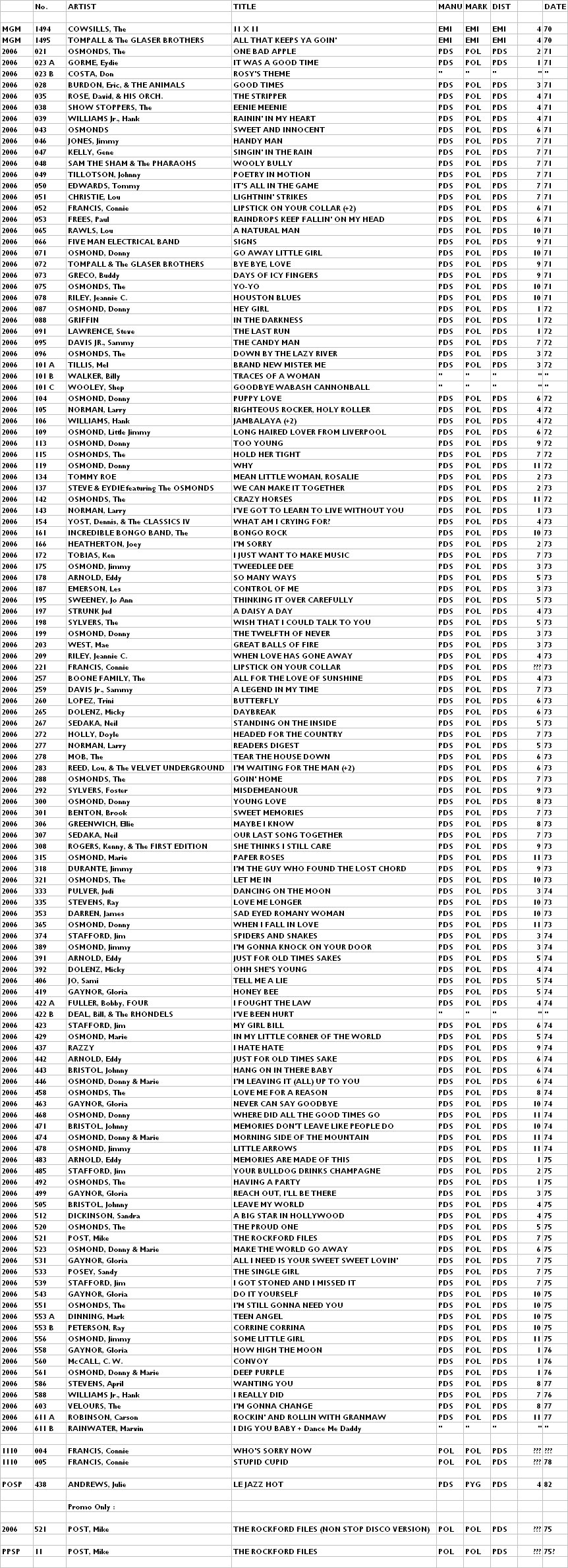


Copyright 2006 Robert Lyons.

